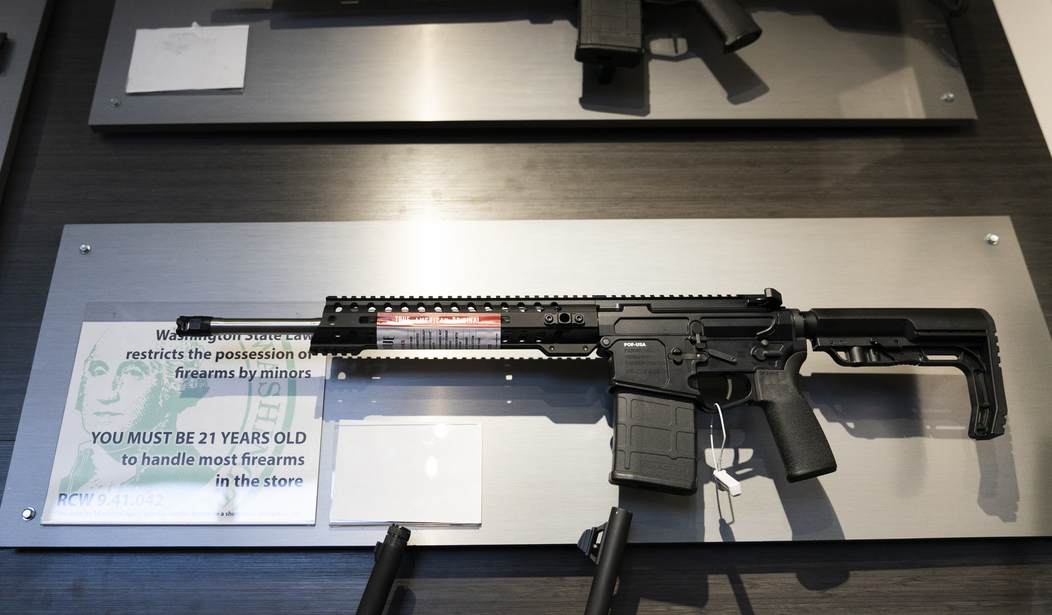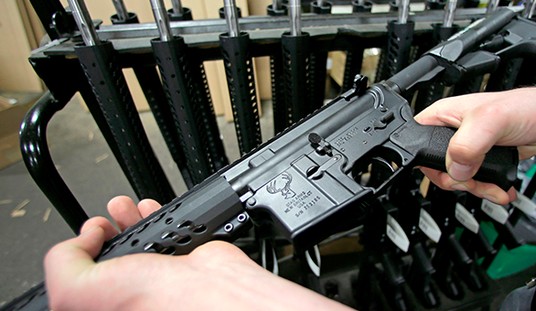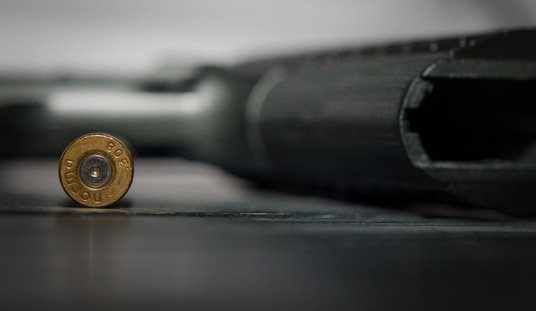A coalition of twenty Democratic attorneys general, including several from states without a prohibition on so-called assault weapons, are sounding off in support of California’s gun ban. In an amicus brief filed with the Ninth Circuit Court of Appeals in Miller v. Bonta, New Jersey Attorney General Matthew Platkin and Massachusetts AG Andrea Campbell and the attorneys general of Arizona, Colorado, Connecticut, Delaware, D.C., Hawaii, Illinois, Maine, Maryland, Michigan, Minnesota, Nevada, New York, Oregon, Pennsylvania, Rhode Island, Vermont, and Washington contend that California’s ban doesn’t violate the Second Amendment because the arms that are prohibited aren’t protected by the Constitution in the first place.
U.S. District Judge Roger Benitez disagreed with that assertion in his decision in Miller, noting that AR-15s and other so-called assault weapons are in common use for lawful purposes across the United States. That was enough for Benitez to determine that the guns in question are protected by the language of the Second Amendment, but the Democratic attorneys general argue that Benitez got it wrong.
The District Court wrongly concluded that Plaintiffs-appellees’ conduct—to possess and carry “firearms like the AR-15 rifle that are commonly-owned for lawful purposes”—is covered by the Second Amendment’s plain text. Assault weapons are not “arms” that are in “‘common use’ for self-defense today”—a prerequisite for Second Amendment protection. For instance, weapons like M-16s that are “most useful in military service” do not fall within the protection of the Second Amendment.
Despite their contention that only arms that are in common use for self-defense are protected by the Second Amendment, what the Supreme Court said in Heller is that the “definition of ‘bearable Arms’ extends only to weapons in common use for a lawful purpose. … [which] is at its core the right to individual self-defense.” While the central reason for the right to keep and bear arms might be self-defense, the Court itself has explicitly stated that weapons in common use for a lawful purpose are prima facie protected by the Second Amendment’s language. That was made explicitly clear not only in Heller but in the Caetano case a few years later where a unanimous Court determined that electronic weapons were covered by the Second Amendment despite the fact that they weren’t around in 1791.
Are AR-15s most useful in military service? Considering that no branch of the military equips service members with semi-automatic AR-15s, I’m gonna go out on a sturdy limb and say “no.” The semi-automatic rifles banned by California have great utility for hunting, self-protection, and sport, but they’re not the weapon of choice for our armed services. The Democratic AGs rely on language from the Seventh Circuit, which denied an injunction against an Illinois ban on “assault weapons” by asserting that the AR-15 is not materially different from the M[-]16,” but if that were really the case we’d be able to walk into our local gun store and pick up an M-16 if we wanted. The federal government clearly believes there’s a significant difference between a select-fire rifle and a semi-automatic rifle, even if Democratic politicians would prefer to consider them one and the same.
The attorneys general also take issue with pointing to the tens of millions of modern sporting rifles that are lawfully owned by citizens as a measure of whether these arms are in common use, declaring that “[t]he number of weapons in circulation depends in significant part on when the government enacted legislation prohibiting it; had governments banned AR-15s the moment they became commercially available, the number of such firearms in circulation would be negligible.” That might be true, but the fact remains that the government did not enact such a ban in the 1960s. It wasn’t until thirty years later that the federal government imposed a ban on the manufacture and sale of arms it considered “assault weapons,” and that prohibition expired in 2004. Since then, the ownership of modern sporting rifles has become even more common, while the number of states that prohibit their purchase or manufacture still make up a small minority of the country at large.
There’s simply no getting around the fact that AR-15s and other modern sporting rifles designated by California as “assault weapons” are in common use for lawful purposes, including (but not limited to) self-defense, and are therefore prima facie protected by the Second Amendment.
The AGs do offer the Ninth Circuit a couple of other arguments as fallback positions; first that states impose a “range of restrictions… on dangerous weapons and accessories not commonly used for self-defense”, and secondly, California’s “assault weapons” ban is relevantly similar to “historical restrictions on firepower and on new, and distinctly dangerous” weapons. Those arguments are even more flimsy than the notion that AR-15s aren’t protected by the Constitution, however. The restrictions that the attorneys general document are all modern creations that have nothing to do with the text, history, and tradition test laid out by the Supreme Court in Bruen, and are utterly meaningless as far as determining the constitutionality of California’s ban.
As for the supposed historical analogues found by Platkin and Campbell, the pair once again try to rewrite both Heller and Bruen to their liking by claiming that the cases “compel the conclusion that courts must consider the broad sweep of our country’s history—including nineteenth- and twentieth-century history—when reviewing the constitutionality of a state law.” But as the Supreme Court stated in Bruen, “when it comes to interpreting the Constitution, not all history is created equal. ‘Constitutional rights are enshrined with the scope they were understood to have when the people adopted them.’ The Second Amendment was adopted in 1791; the Fourteenth in 1868. Historical evidence that long predates or postdates either time may not illuminate the scope of the right.”
The AGs need to be able to point to 20th century gun bans to buttress their case because there are no such sweeping prohibitions in the 18th or 19th century. As they write:
The absence of eighteenth- and nineteenth-century legislative enactments addressing such weapons cannot mean there exists no historical tradition of comparable regulation, because there would have been scant reason for States to regulate the weapons during those eras. This case is a prime example: “[t]he true semi-automatic weapon did not become feasible and available until the beginning of the twentieth century, and the primary market was the military.”
For the sake of argument let’s assume that’s correct. Even if semi-automatic firearms didn’t become available until the turn of the 20th century, where are the similar prohibitions on multi-shot revolvers and repeating rifles in the 19th century? Both of those developments were akin to the technological advance of semi-automatic firearms, yet the historical record doesn’t show any moms demanding lever-action rifles be banned or cities like Washington, D.C. or Chicago banning the possession and sale of revolvers around the time that the Fourteenth Amendment was ratified.
Bans on commonly owned firearms, be it the handgun bans imposed by D.C. and Chicago or the “assault weapon” bans created by a handful of states, are thoroughly modern creations without any historical analogues. The arguments raised by the Democratic AGs will probably be warmly received by the Ninth Circuit, but I don’t think they’re going to fare nearly as well when the Supreme Court does decide the time is ripe to weigh in on the constitutionality of prohibiting so-called assault weapons.









Join the conversation as a VIP Member